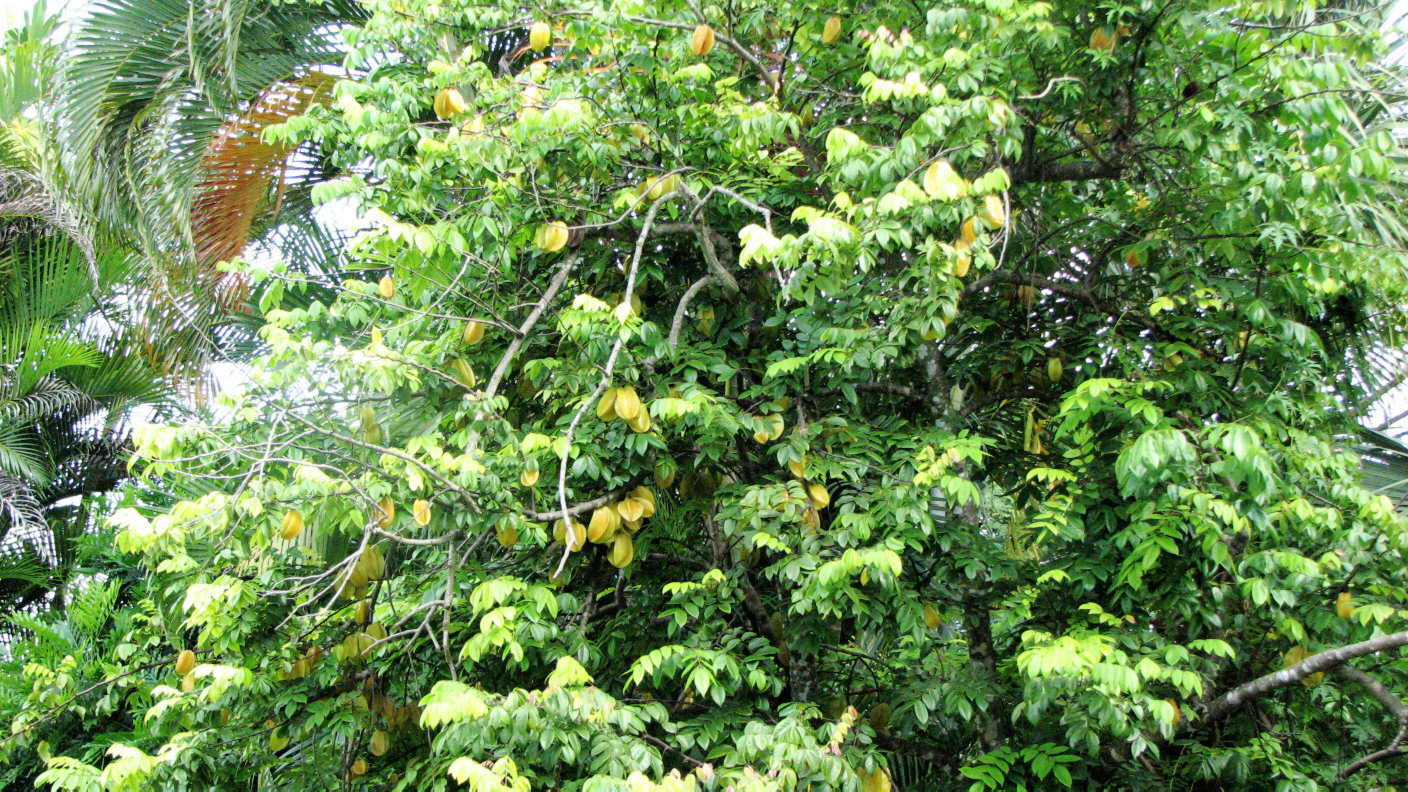Star Fruit
This beautiful small tree is full of this curious, attractive fruit of the Oxalidaceae family: the carambola which is believed to have originated in Ceylon and the Moluccas has been cultivated in southeast Asia and Malaysia for many centuries. It was introduced into southern Florida before 1887, and here it is, thriving in Miami.
Averrhoa carambola L., has traveled sufficiently to have acquired a number of regional names in addition to the popular Spanish name of Carambola. In the Orient, it is usually called balimbing, belimbing, or belimbing manis ("sweet belimbing"), to distinguish it from the bilimbi or belimbing asam, A. bilimbi L. In Ceylon and India, the carambola has the alternate names of kamaranga, kamruk, or other variants of the native kamrakh. In Vietnam, it is called khe. Other names: In Kampuchea, spu; in Laos, nak fuang, or the French name, carambolier; in Thailand, ma fueang. Malayans may refer to it as belimbing batu, belimbing besi, belimbing pessegi, belimbing sayur, belimbing saji, kambola, caramba, or as "star fruit". Australians use the descriptive term, five corner; in Guam, it is bilimbines; to the Chinese, it is yang-táo. Early English travelers called it Chinese, or Coromandel gooseberry, or cucumber tree. In Guyana, it is five fingers; in the Dominican Republic, it is vinagrillo; in Haiti, zibline; in some of the French Antilles, cornichon; in El Salvador, pepino de la India; in Surinam, blimbing legi or fransman-birambi; Costa Rica, tiriguro; in Brazil, camerunga or caramboleiro, or limas de Cayena; in Mexico, carambolera or caramboler or árbol de pepino; in Trinidad, it may be called coolie tamarind. Venezuelans call it tamarindo chino or tamarindo dulce.
This star fruit can be eaten out of hand, or used in salad. The carambolas from this tree is very sweet and its fruits are well sought after. I don't like this much and do not care for it at all.


No comments:
Post a Comment